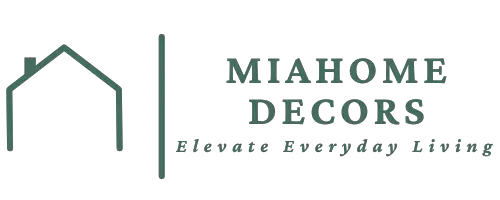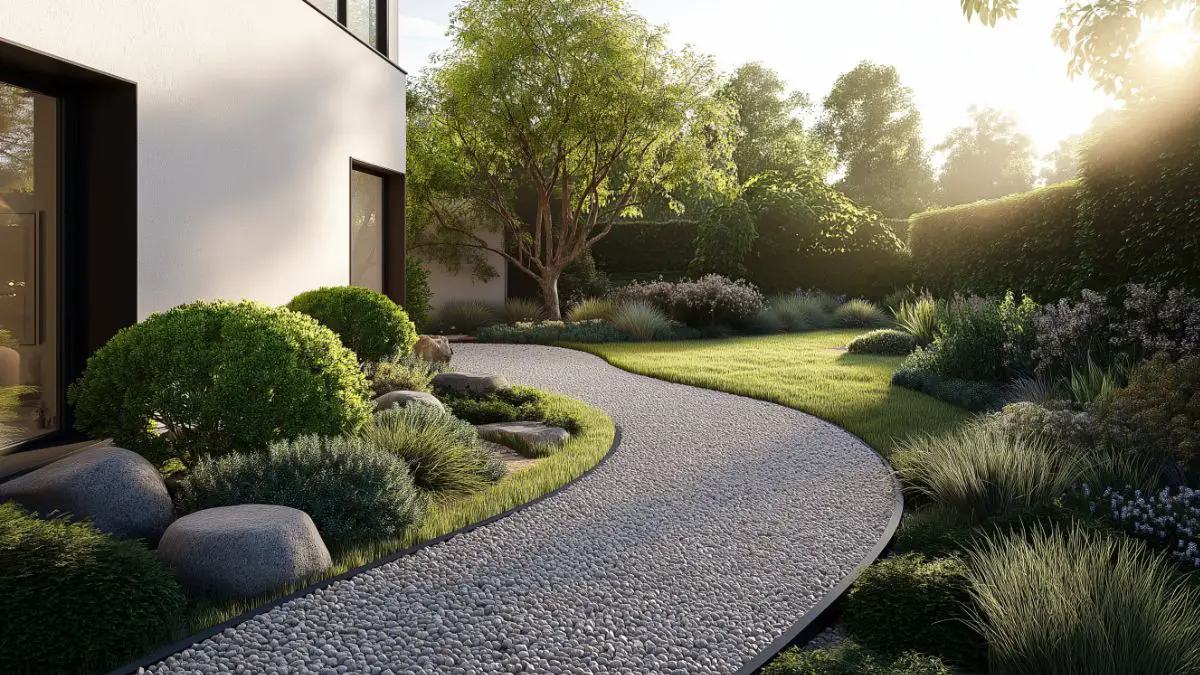Easy Landscaping Front Yard Inspiration for Small Spaces
Table of Contents
Introduction
A small front yard doesn’t mean limited possibilities—it means smart design, creative solutions, and major curb appeal on a compact scale. In fact, small yards can often be easier and more budget-friendly to transform, offering just enough space to make a lasting impression without overwhelming your weekend plans or wallet.
According to Zillow, homes with attractive landscaping can sell for up to 5.5% more, and in a small space, every detail counts. With thoughtful planning and just a few well-chosen elements, you can create a welcoming, beautiful front yard that matches the charm of your home—no matter the square footage.
This post is your guide to easy landscaping inspiration tailored specifically for small front yards. Whether you’re working with a narrow strip, urban stoop, or cozy cottage path, these ideas will help you blend functionality, beauty, and personality into your outdoor space.
In-Depth Outline
1. Maximize Space with Simple Layout Design
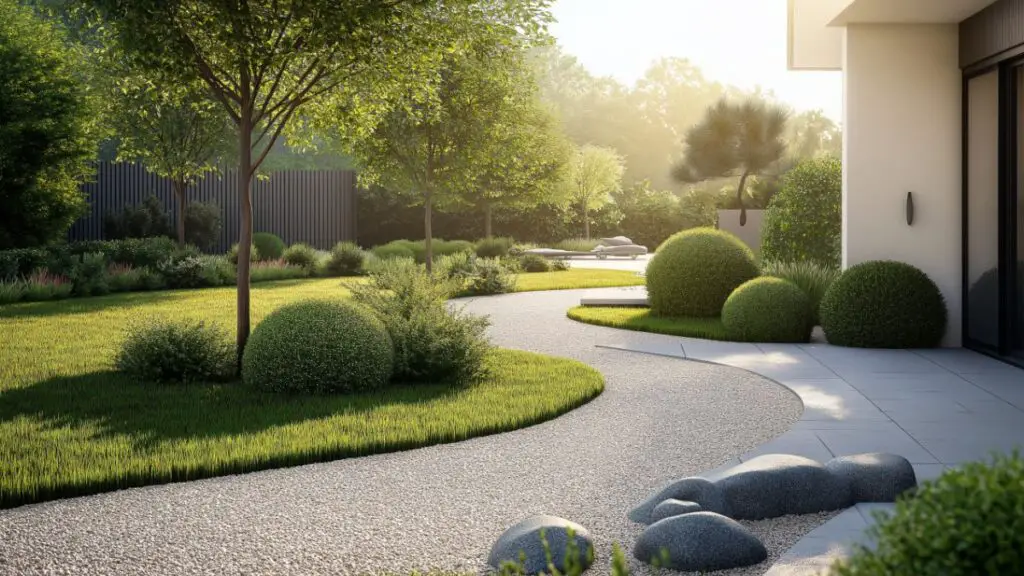
- Use curved lines or diagonal paths to give the illusion of more space.
- Stick to one clear focal point—like a tree, fountain, or seating area.
- Avoid clutter by limiting plant varieties and hardscape types.
- Design small “zones” (e.g., welcome mat area, pathway, garden border).
- Use symmetry to organize narrow or rectangular yards.
Table: Layout Strategies for Small Yards
| Strategy | Visual Effect | Best For |
|---|---|---|
| Diagonal Path | Makes space look larger | Narrow yards |
| Centered Focal Point | Organizes flow | Square yards |
| Curved Bed Edging | Softens hard lines | Modern or classic homes |
2. Choose Low-Maintenance Plants with High Impact
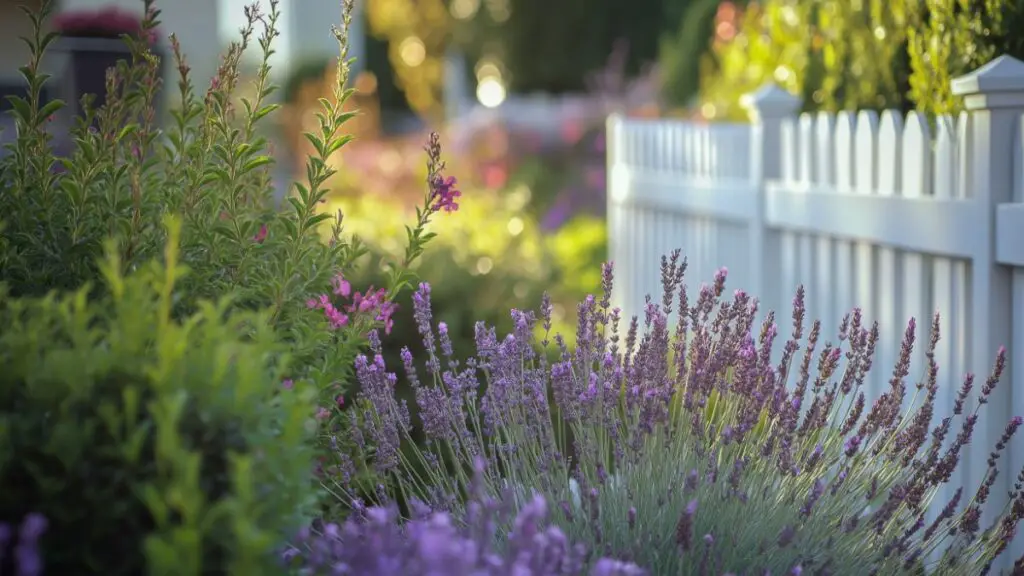
- Stick to native or drought-tolerant varieties to reduce upkeep.
- Use evergreens for year-round structure and color.
- Mix in one or two flowering perennials for seasonal interest.
- Avoid plants that outgrow small beds—opt for dwarf or compact versions.
- Groundcover plants (like creeping thyme) soften the space and reduce weeding.
Table: Easy-Care Plants for Small Front Yards
| Plant Type | Examples | Benefits |
|---|---|---|
| Evergreen Shrubs | Boxwood, dwarf holly | Structure + year-round color |
| Flowering Perennials | Lavender, salvia, coreopsis | Pollinator-friendly, colorful |
| Groundcovers | Creeping Jenny, thyme, sedum | Fills gaps, suppresses weeds |
3. Make a Statement with Planters and Containers
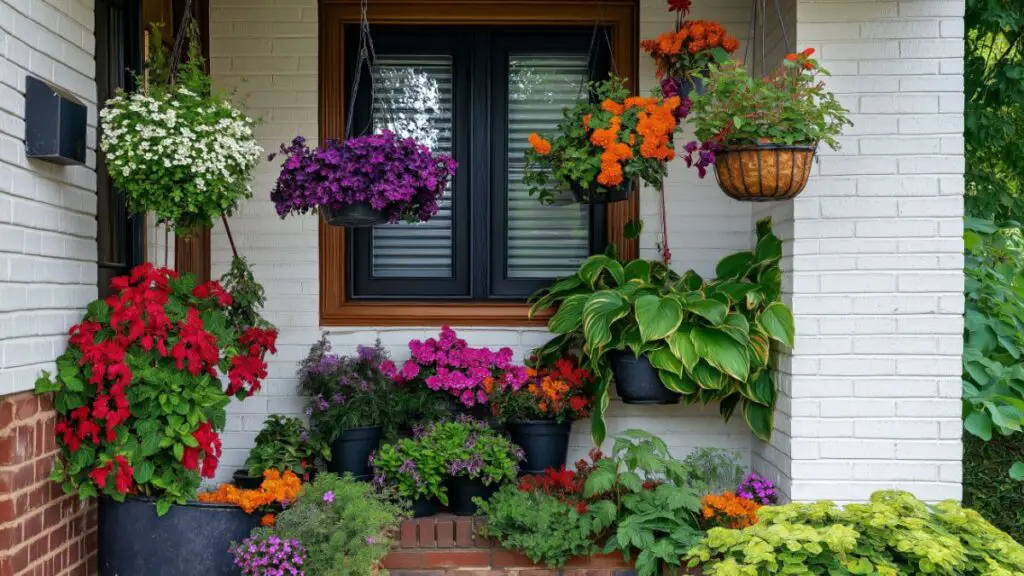
- Use containers to add greenery where beds aren’t possible.
- Mix heights and textures for visual depth in small areas.
- Coordinate colors with your home’s trim or front door.
- Use wheeled or lightweight containers for easy rearranging.
- Try stacking or tiered stands to maximize vertical space.
Table: Container Ideas for Small Front Yards
| Container Style | Best Placement | Design Tip |
|---|---|---|
| Tall ceramic pots | Flank front steps | Anchor entry with symmetry |
| Window boxes | Below windows | Match with trim color |
| Hanging baskets | Porch railings | Soften vertical lines |
4. Use Vertical Features to Draw the Eye Upward
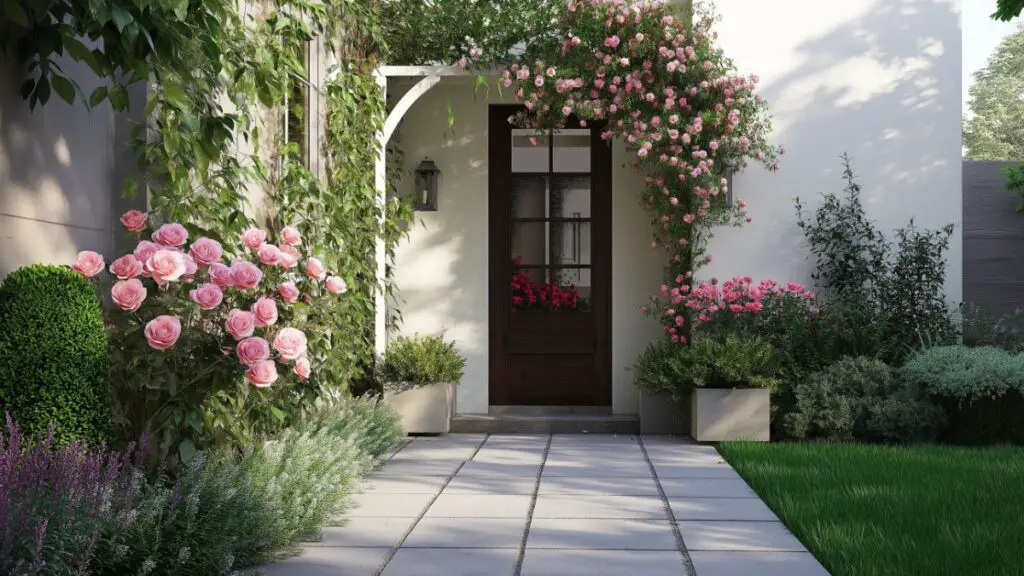
- Add a trellis or obelisk to grow climbing plants vertically.
- Hang planters, baskets, or lights from porch beams or fences.
- Install tall, narrow plantings like columnar evergreens or grasses.
- Use wall-mounted garden art or mirrors to create dimension.
Table: Vertical Elements and Their Benefits
| Feature | Vertical Function | Ideal Use Case |
|---|---|---|
| Trellis | Supports climbing plants | Narrow garden beds |
| Obelisk | Adds garden sculpture | Focal point in small beds |
| Hanging Planters | Brings blooms to eye level | No ground space needed |
5. Define Pathways and Entry with Edging and Hardscapes
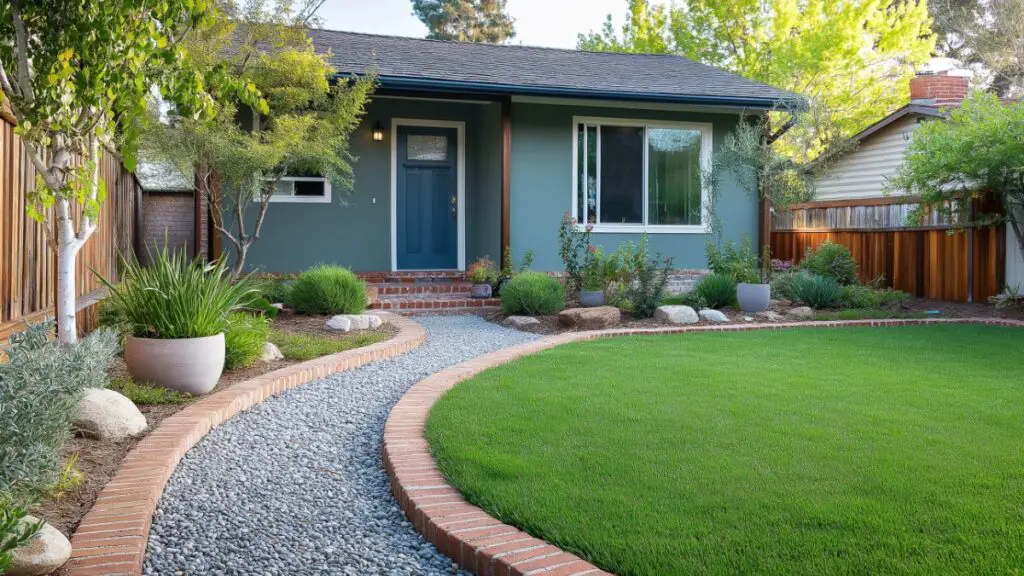
- Use stone, gravel, or brick to define entryways and guide movement.
- Create clean edges between lawn and beds for polished lines.
- Small front yards benefit from uniform hardscaping materials.
- Add stepping stones or paver paths that complement your home’s exterior.
Table: Hardscaping Material Comparison
| Material | Pros | Best Used For |
|---|---|---|
| Gravel | Affordable, drains well | Paths, between plant beds |
| Brick | Classic, warm-toned | Entry borders, rustic homes |
| Concrete Pavers | Sleek, modern look | Minimalist or modern homes |
6. Add Lighting and Details to Boost Curb Appeal
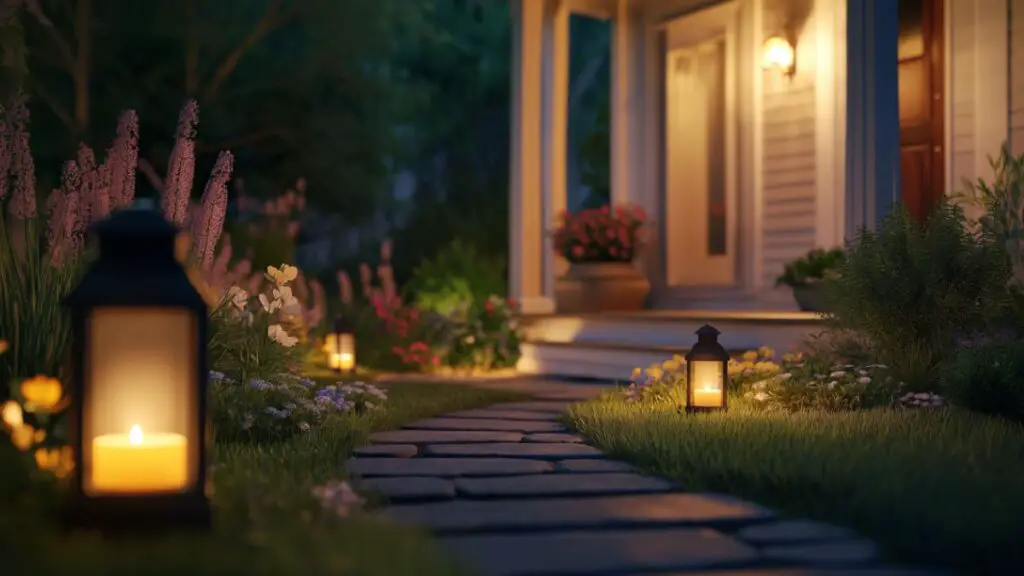
- Use solar-powered path lights to illuminate walkways.
- Uplight trees, shrubs, or porch columns for visual drama.
- Add a classic porch lantern or sconce for warmth.
- Incorporate personal touches like custom house numbers, welcome signs, or a seasonal wreath.
Table: Easy Lighting Features
| Feature | Placement | Benefit |
|---|---|---|
| Solar path lights | Along walkways | Safety + ambiance |
| Wall-mounted lantern | By the front door | Highlight architecture |
| Uplighting | At base of plants | Adds nighttime elegance |
Detailed Content Expansion
2. Choose Low-Maintenance Plants with High Impact
In a small front yard, every plant matters. That’s why it’s crucial to prioritize low-maintenance varieties that offer beauty without demanding constant care. The key is selecting compact plants that perform year-round or provide multi-seasonal interest.
Start with a structural base: evergreens like dwarf boxwood or compact holly offer consistent color and a formal touch. These shrubs can be shaped and used as anchors in corners or beside pathways.
Then, add in flowering perennials for a splash of seasonal color. Lavender is a top choice—it’s fragrant, drought-resistant, and adds height without bulk. Salvia and coreopsis are also pollinator favorites, great for sunny spots.
Finish with groundcovers that keep weeds at bay and soften the space. Creeping Jenny offers bright chartreuse foliage that spills over edges, while creeping thyme brings both texture and fragrance.
Compact plants not only stay within bounds but also allow you to pack more variety into a small space—creating a rich, layered look that doesn’t feel overcrowded.
Table: Easy-Care Plants for Small Front Yards
| Plant Type | Examples | Benefits |
|---|---|---|
| Evergreen Shrubs | Boxwood, dwarf holly | Structure + year-round color |
| Flowering Perennials | Lavender, salvia, coreopsis | Pollinator-friendly, colorful |
| Groundcovers | Creeping Jenny, thyme, sedum | Fills gaps, suppresses weeds |
4. Use Vertical Features to Draw the Eye Upward
When ground space is limited, go vertical. Adding height not only makes your yard feel larger, it also brings dynamic visual movement and balances the proportions of a smaller lot.
Start with a trellis or obelisk—perfect for climbing roses, clematis, or even edible vines like sweet peas. These add height, color, and fragrance, while creating a focal point without taking up much room.
You can also make use of porch posts, walls, or fences by hanging lightweight planters or baskets. Use cascading plants like ivy or trailing petunias to draw the eye upward and create a sense of fullness.
Another vertical trick is planting narrow, columnar evergreens (like Sky Pencil Holly) or ornamental grasses. These create vertical structure without blocking views or overwhelming the space.
Don’t forget vertical accents like garden mirrors, hanging lanterns, or decorative plaques—these elevate your design and make your yard feel cozy, even when square footage is tight.
Table: Vertical Elements and Their Benefits
| Feature | Vertical Function | Ideal Use Case |
|---|---|---|
| Trellis | Supports climbing plants | Narrow garden beds |
| Obelisk | Adds garden sculpture | Focal point in small beds |
| Hanging Planters | Brings blooms to eye level | No ground space needed |
Conclusion
Creating a beautiful front yard doesn’t require a large plot of land or a massive budget—it simply requires intention. With compact layouts, thoughtful plant selection, and a mix of vertical features, containers, and lighting, you can turn even the smallest yard into a welcoming, stylish entry.
These easy landscaping front yard ideas for small spaces will help you boost curb appeal and make the most of your home’s first impression—one square foot at a time.
